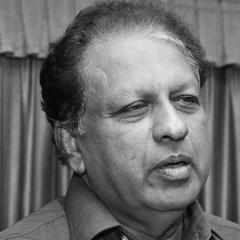Column | India-US roller coaster set to rise again
.jpg?w=1120&h=583)
Mail This Article
India-US relations have been compared to a roller coaster ride right from the beginning. The relations rose slowly to high levels occasionally and they fell to the ground for various reasons and they rose again. During the Cold War, India was supposed to be in the Soviet camp and non-alignment was immoral. The fact that both were democracies and that the Indian constitution closely followed the US model did not make any difference to Washington.
People-to-people contacts were there and even educational and scientific collaboration took place between institutions occasionally. Modest Indian migration of Indian professionals took place from time to time. The supply of foodgrains under PL 480 and the supply of weapons after the Chinese aggression and the Atom for Peace programme were exceptions rather than the rule.
Things changed after the end of the Cold War and India initiated changes in its policies to suit the unipolar world that had emerged. President Bill Clinton ordered a study on India-US relations, which recommended that new initiatives should be taken to respond to India. He said that India was a gap in his understanding of the world and expressed a desire to visit India. Prime Minister Inder Gujral warmly welcomed the initiative and a visit was discussed between the two sides.
But when the roller coaster began to rise again, the nuclear tests of May 1998 brought it down to the lowest level.

The process continued after the Jaswant Singh-Talbot talks when Clinton visited India and Vajpayee visited Washington. Things improved further when President Bush and Prime Minister Manmohan Singh began discussing a nuclear deal, which was signed in 2008. President Barack Obama pursued the nuclear deal, but India's liability laws and its decision not to purchase American jet fighters cast a gloom over the relations.
But an agreement was reached between him and Prime Minister Modi on cooperation in the India-Pacific and also India became a close defence partner of the United States. Prime Minister declared a new symphony in India-US relations in his address to the US Congress in 2016.
The relations remained stable during the time of President Trump as the threat from China to the Indo-Pacific and the East China Sea aggravated. The Quad, created for the strategic dialogue among the democracies of the region strengthened, but the complications arising out of the pandemic and trade disputes created their own negative impact on the relations.

President Biden and Vice President Kamala Harris were a ray of hope, but their championing of human rights in India was not conducive to a good relationship, even though India was seen as a good bet to be a strategic partner against China. India was reluctant to turn the Quad into a military alliance. The invasion of Ukraine by Russia caused a setback because the US did not understand why India had not condemned the aggression. The US began to criticise the credentials of India as a democracy and produced reports that projected India as having denied the freedom to minorities on account of certain laws enacted. The US remained lukewarm as the US was more preoccupied with Europe rather than Asia.
With the sudden announcement that Prime Minister Modi was invited to visit Washington on a state visit, only the third since Biden took over, the roller coaster began to move upwards. The Indian position on the Ukraine war was considered more helpful than was originally thought and India was given a clean chit as a "vibrant democracy." It was clarified that any discussion on the health of democratic institutions would take place between friends.
Having set aside the two irritants, the two sides explored other avenues of cooperation and expressed the hope that key strategic and defence agreements will be signed during the visit. Among the deals expected to make progress is a major technology partnership for GE 414 jet engines to be assembled in India and other co-development plans under the Initiative on Critical and Emerging Technology shaped by the two National Security Advisers. Modi's meetings in the White House and his address to the joint meeting of the US Congress will reveal the full extent of the new relationship, to be crowned by a large gathering of the Indian community at the Kennedy Centre.
The indications are that the US will continue to press India to endorse the Quad as a military alliance against China. Questions have been raised about the utility of the relationship if India would not fight China in the event of a US-China confrontation.

More recently, there has been a Congressional Committee recommendation that India should be invited to join NATO. India has rejected the suggestion, but the US clearly expects that India would become an alliance partner without calling itself so. The roller coaster is rising slowly, but it is not likely to reach a plateau of a perfect partnership at this point.


